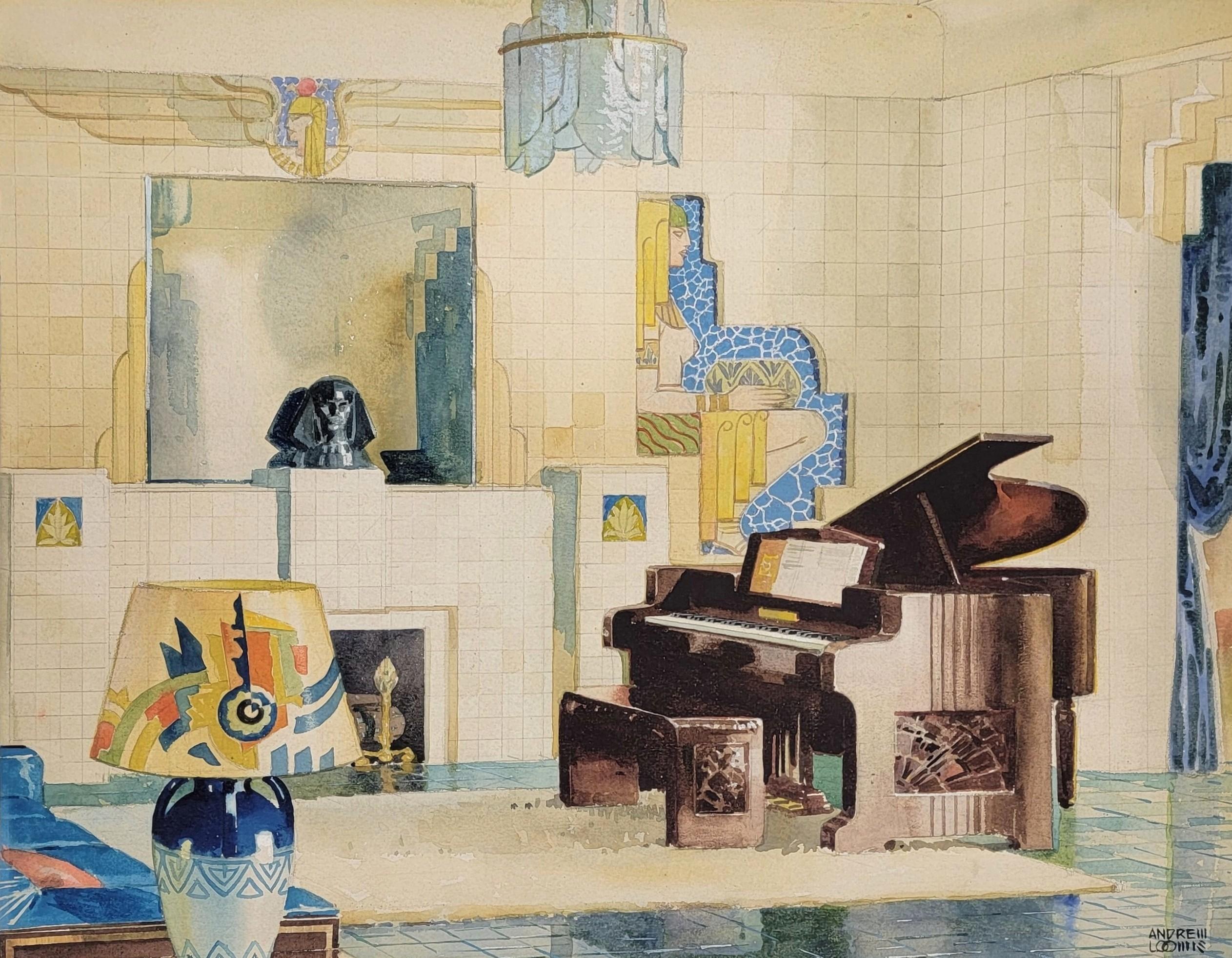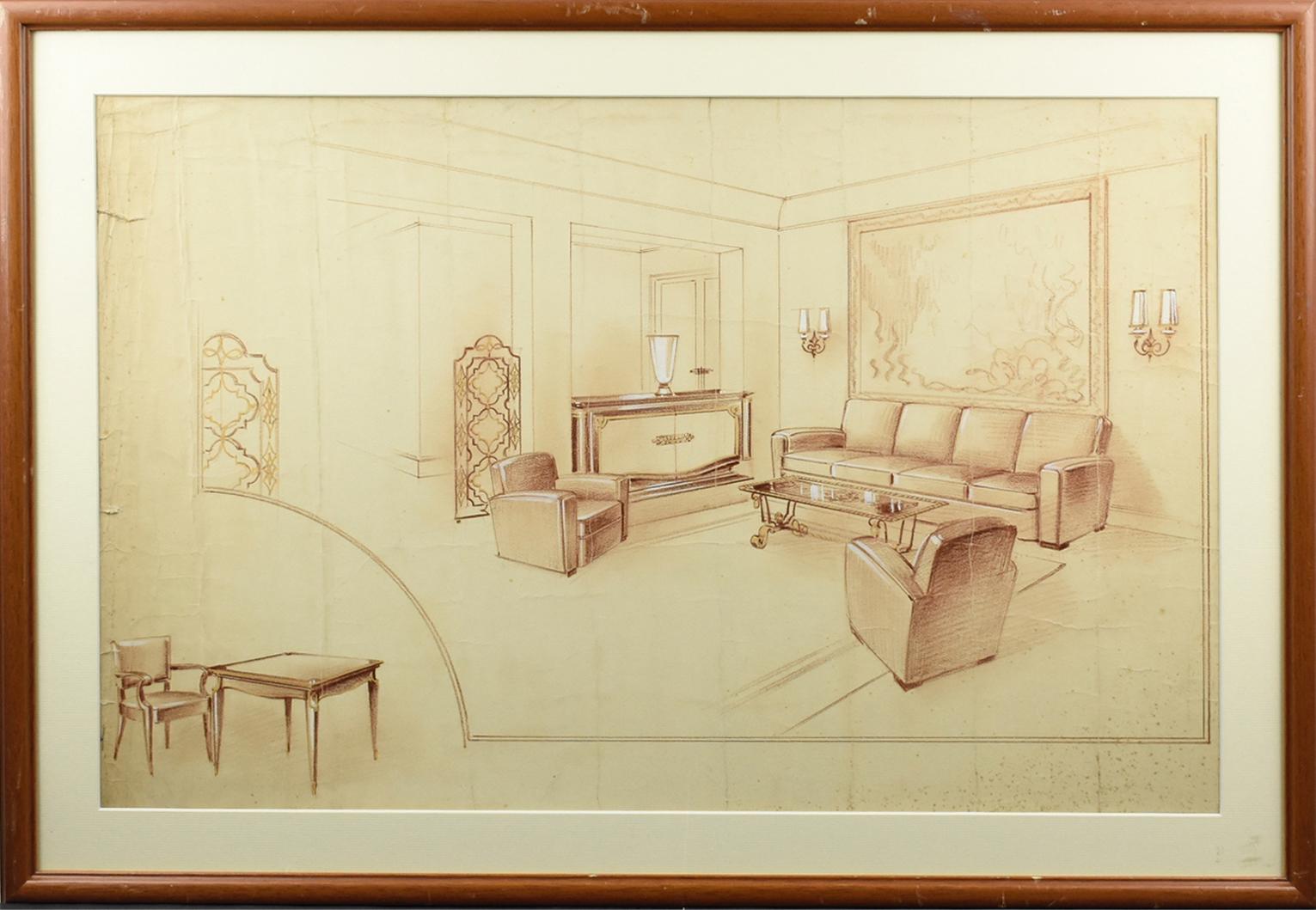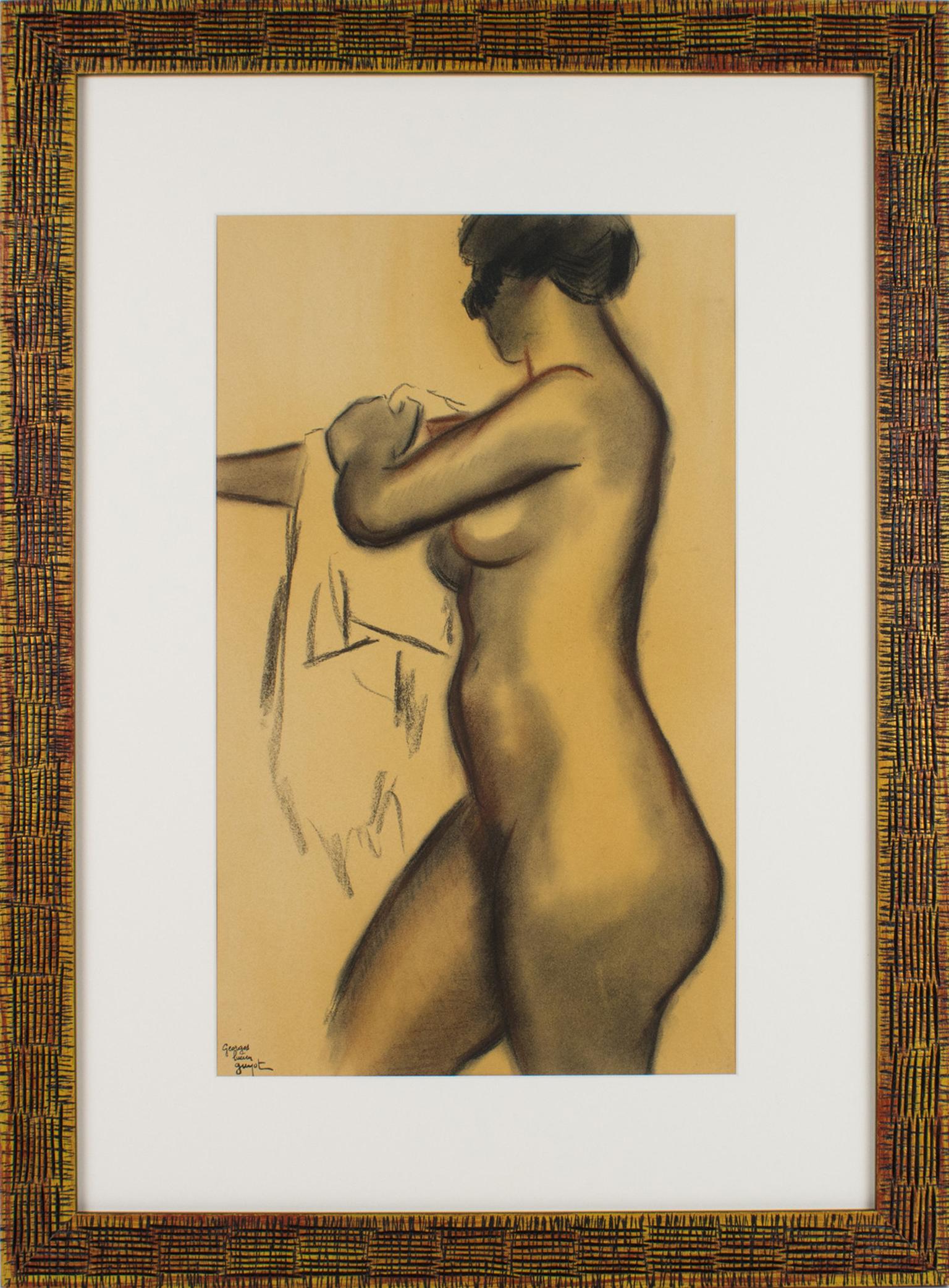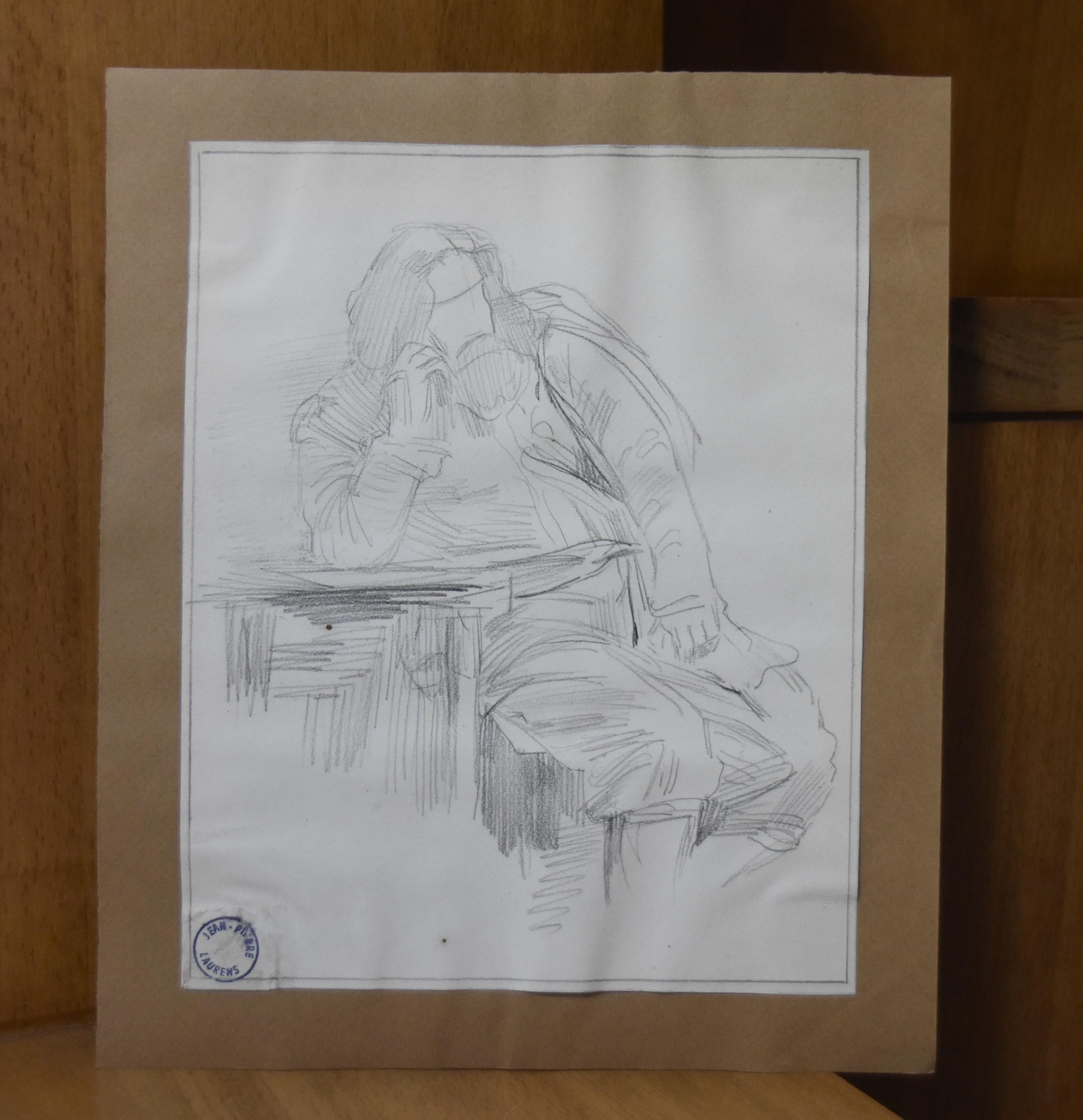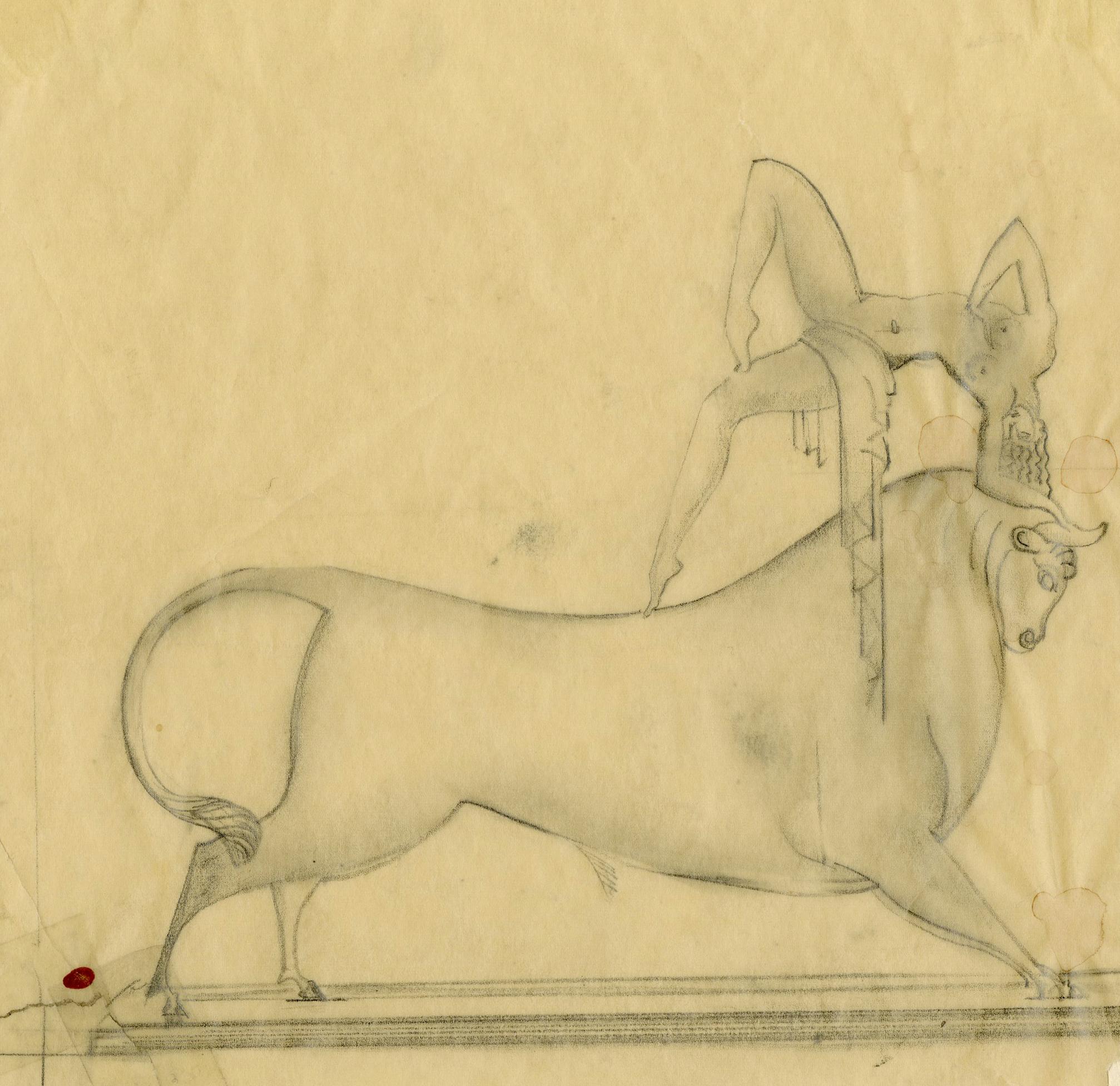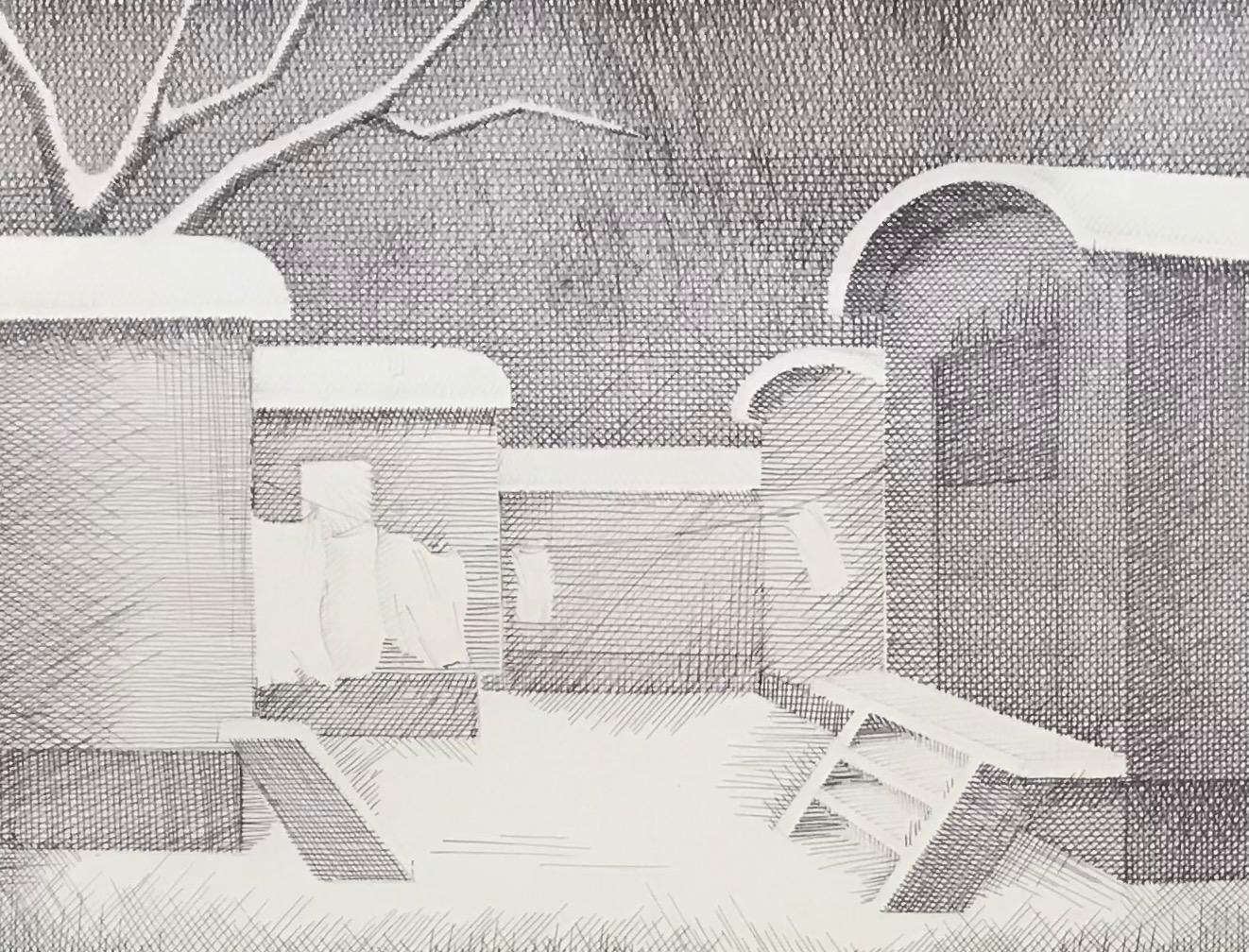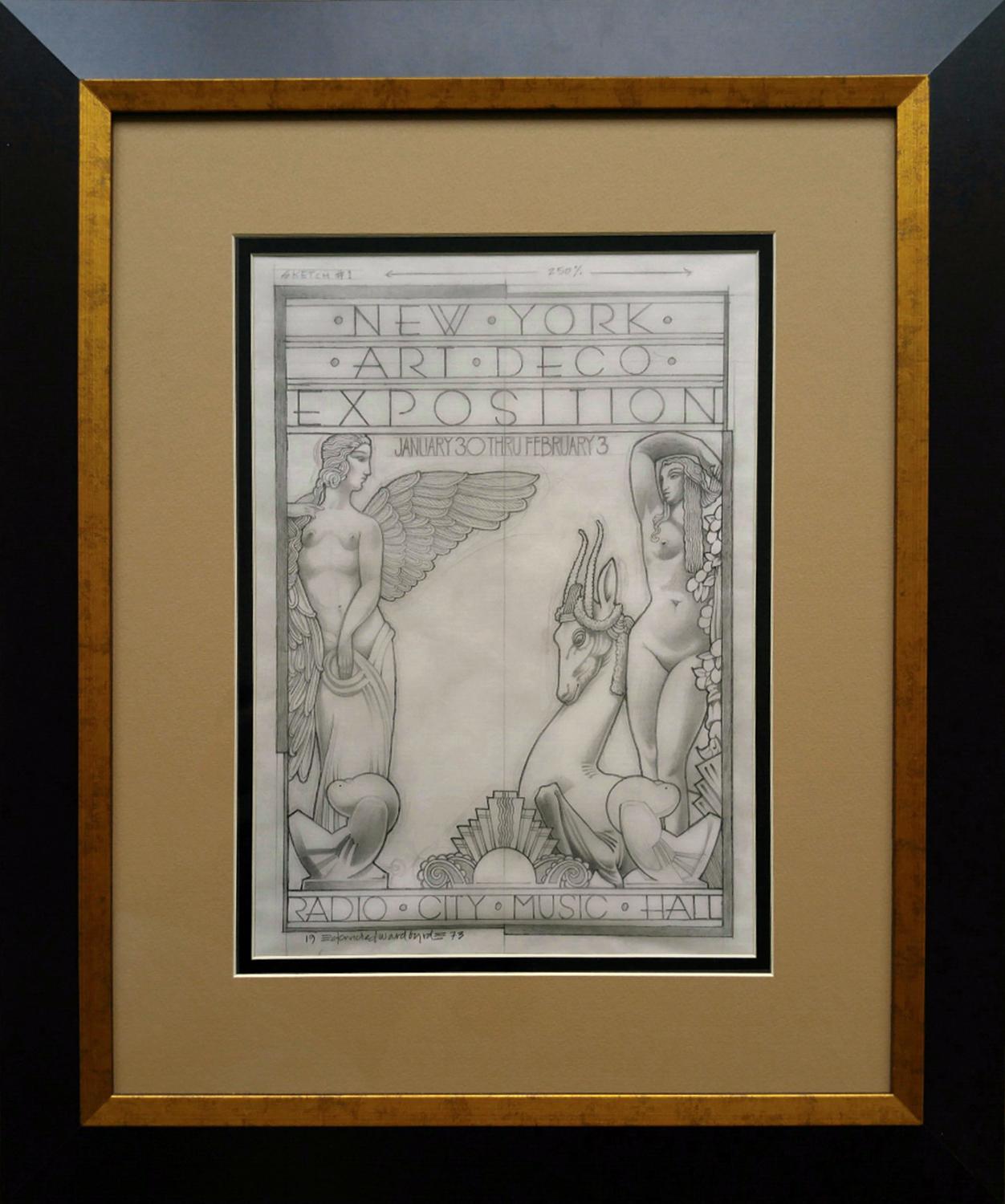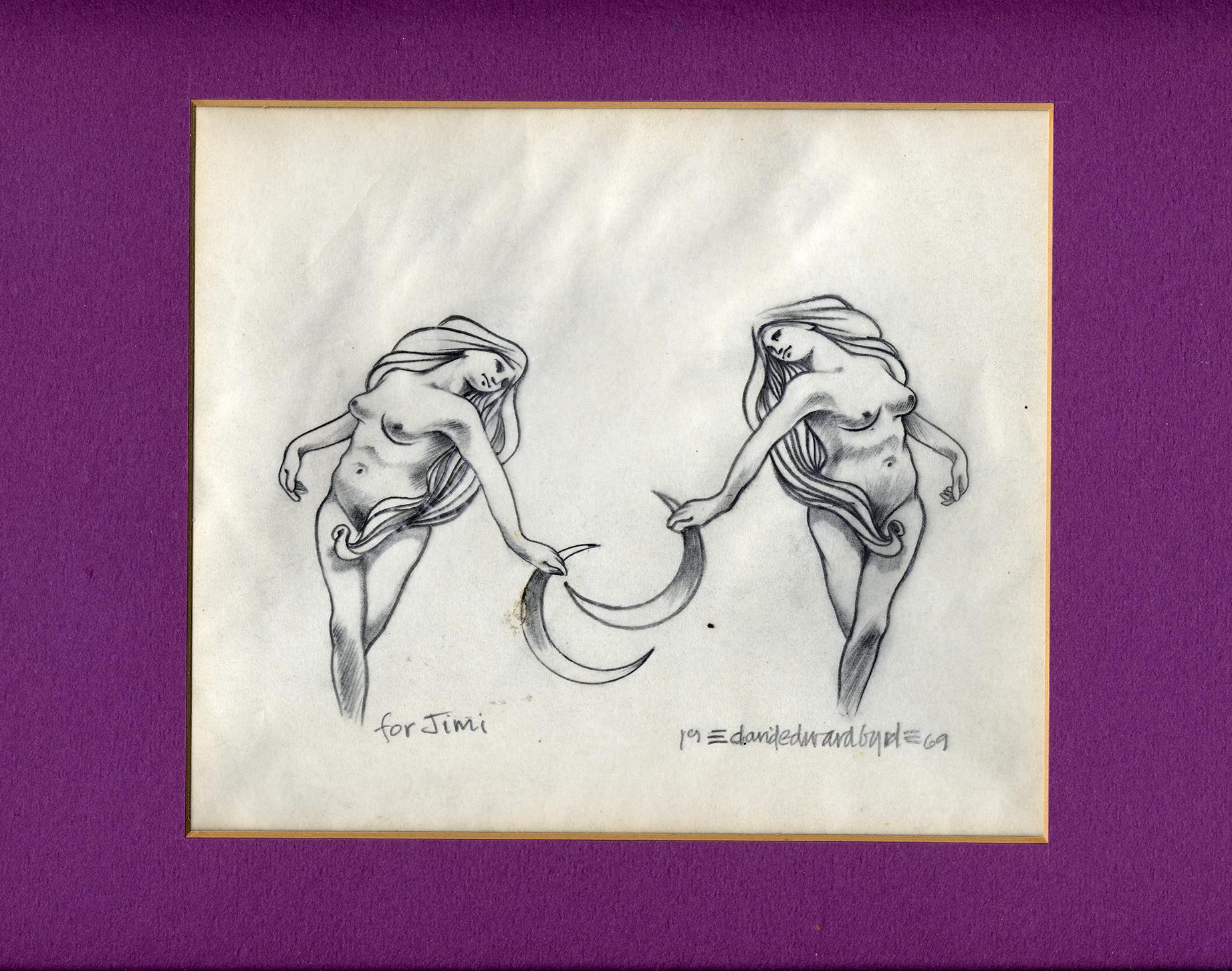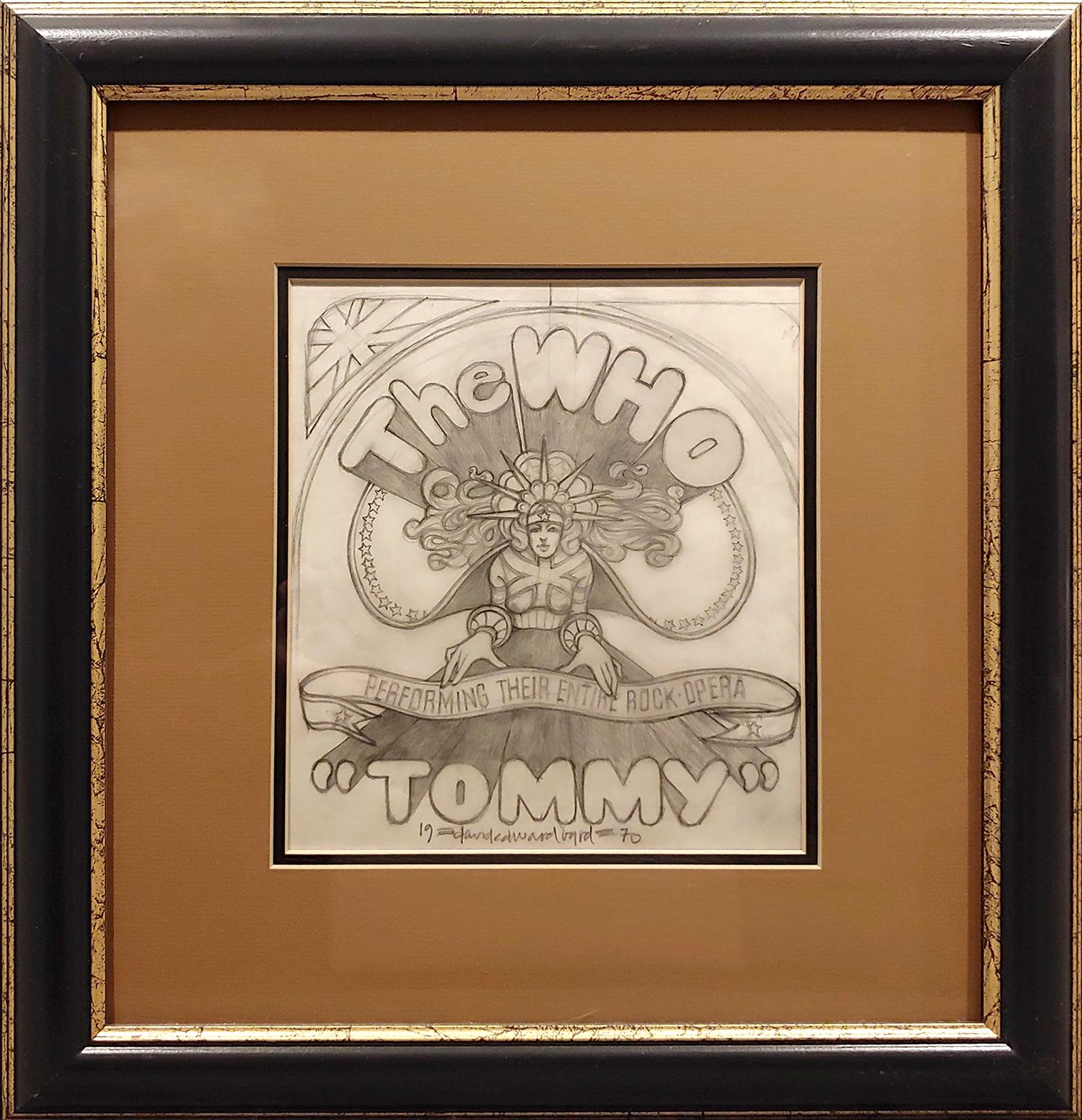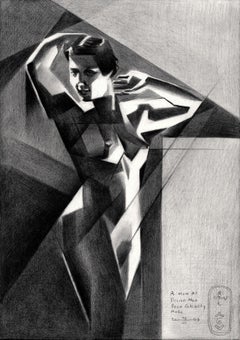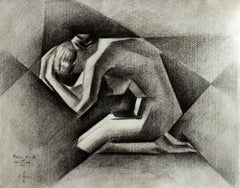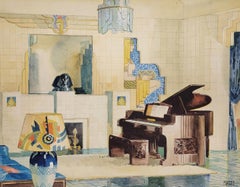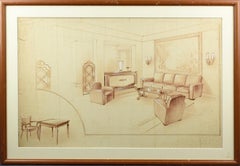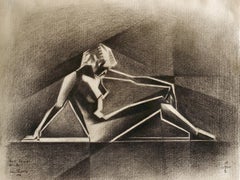
Art Deco Nude – 15-08-22, Drawing, Pencil/Colored Pencil on Paper
View Similar Items
Want more images or videos?
Request additional images or videos from the seller
1 of 2
Corne AkkersArt Deco Nude – 15-08-22, Drawing, Pencil/Colored Pencil on Paper2022
2022
About the Item
- Creator:
- Creation Year:2022
- Dimensions:Height: 9.5 in (24.13 cm)Width: 12.2 in (30.99 cm)Depth: 0.1 in (2.54 mm)
- Medium:
- Movement & Style:
- Period:
- Condition:
- Gallery Location:Yardley, PA
- Reference Number:Seller: 1409381stDibs: LU802111126162
About the Seller
5.0
Platinum Seller
These expertly vetted sellers are 1stDibs' most experienced sellers and are rated highest by our customers.
Established in 2009
1stDibs seller since 2017
1,302 sales on 1stDibs
Typical response time: 2 hours
More From This SellerView All
- A Non AI-Driven Neo Deco Celebrity Nude – 09-03-23, Drawing, Pencil/Colored PeBy Corne AkkersLocated in Yardley, PAEven at the Mauritshuis This graphite pencil drawing ‘A Non AI-Driven Neo Deco Celebrity Nude – 09-03-23’ is something different or is it? Inspired by a smashing reference picture I was although I don’t know its origins. There are so many art deco pictures...Category
2010s Art Deco Drawings and Watercolor Paintings
MaterialsPencil
- Art Deco Nude – 05-08-22, Drawing, Pencil/Colored Pencil on PaperBy Corne AkkersLocated in Yardley, PANew Materials This Art Deco Nude as theme is not something new, the materials are. The last decade I have been using mostly Bristol paper for my graphite pencil drawings. It has a...Category
21st Century and Contemporary Art Deco Drawings and Watercolor Paintings
MaterialsPencil
- Neo Deco – 03-12-22, Drawing, Pencil/Colored Pencil on PaperBy Corne AkkersLocated in Yardley, PABristol Again This graphite pencil drawing ‘Neo Deco – 03-12-22’ follows after a couple of colored pencil drawings. These were fun to do but I wanted to get back to basics and to me that has always been black and white. There was another reason too. Some months ago I drew ‘Art Deco Nude – 05-08-22’ on Ingres paper, which I didn’t use for a long time. Next to the love for Ingres I was a bit worried how my new Faber-Castell pencils would react on Bristol paper. I did a couple of tests then on demand of Brugman Art who gave me these to try out. Initially they felt a bit sticky on Bristol and a bit too smooth. Today I have to withdraw this statement and replace it with newer and better experiences. Gradients My major concern was whether I could get smooth tonal gradients such as the ones in my Roundism series. Now that I tried to combine Pitt Graphite Matt with Bristol I see I can. The gradients are just fine whereas I can blacken the paper even more than with regular graphite pencil. It is even susceptible for rubbing out. Furthermore it gives me the ability to find heftier expressions, covering the total tonal bandwith from pure black to pristine white. Neo Deco The artistic motif itself was yet another smashing Walter Bird photo...Category
2010s Art Deco Drawings and Watercolor Paintings
MaterialsPencil
- Neo Deco – 02-02-23, Drawing, Pencil/Colored Pencil on PaperBy Corne AkkersLocated in Yardley, PAExtending the Series This graphite pencil drawing ‘Neo Deco – 02-02-23’ follows one in the same series. However, for the last one I used my regular model. This time I got ye...Category
2010s Art Deco Drawings and Watercolor Paintings
MaterialsPencil
- Neo Deco – 09-02-23, Drawing, Pencil/Colored Pencil on PaperBy Corne AkkersLocated in Yardley, PAStraight Lines and Curves This graphite pencil drawing ‘Neco Deco – 09-02-23’ is a representation of the female body in both straight lines and curves. After the last one I ...Category
2010s Art Deco Drawings and Watercolor Paintings
MaterialsPencil
- Slava Ukraini - 15-02-23, Drawing, Pencil/Colored Pencil on PaperBy Corne AkkersLocated in Yardley, PASad Times This graphite pencil drawing ‘Slava Ukraini – 15-02-23’ is a depiction of The Motherland Monument in Kyiv, Ukraine. Since the Russo-Ukrainian War became full-blown...Category
2010s Art Deco Drawings and Watercolor Paintings
MaterialsPencil
You May Also Like
- Mosaic Tiles 1930 by Andrew Loomis, American Home Magazine Illustration Art DecoBy Andrew LoomisLocated in Grand Rapids, MIAndrew Loomis (American, 1892-1959) Signed: Andrew Loomis (Lower, Right) " Mosaic Tiles " 1930 16 1/2" x 21" Watercolor with Graphite and Gouache on Illustration Board Overall S...Category
20th Century Art Deco Interior Drawings and Watercolors
MaterialsWatercolor, Gouache, Graphite
- French Interior Decoration Project Study by Maurice Dufrene Studio, 1940sBy Maurice DufrêneLocated in Atlanta, GAThis attractive French interior decoration study project drawing is attributed to Maurice Dufrene Studio. The project features the interior decoration for a typical 1930/40s upper-cl...Category
Early 20th Century Art Deco Interior Drawings and Watercolors
MaterialsPaper, Pencil
- Female Nude Study Charcoal and Red Chalk Drawing by Georges Lucien GuyotBy Georges Lucien GuyotLocated in Atlanta, GAFrench artist Georges Lucien Guyot (1885 - 1972) signed this charming woman nude study. This painting features a lovely design of a woman getting out of the bath and wiping with a towel. Only a few lines in charcoal and red chalk or sanguine mark the silhouette and posture and capture the model's expression. The red color emphasizes the color of the skin and imbues the lascivious movement. The sketches of the bath towel are only suggested, but it gives the whole thing a lot of softness and an incredible illusion of movement. Signed on the bottom left corner: Georges Lucien Guyot. The artist used a technique named "sanguine," or red chalk or crayon. The drawing has a blood-red, reddish, or flesh coloration. It has been popular for centuries for drawing employed by 15th and 16th Century artists such as the great masters like Leonardo da Vinci, Michelangelo, and Raphael. The drawing is ornate with a contemporary wood frame with a red and yellow deep-textured pattern and an off-white matte with acrylic glass protection. Measurements: With Frame: 20.87 in. wide (53 cm) x 28.35 in. high (72 cm) x 1 in. deep (2.5 cm). View alone: 11.44 in. wide (29 cm) x 18.94 in. high (48 cm). About: Georges Lucien Guyot (born December 10, 1885, in Paris, where he died December 31, 1972) is a French artist, sculptor, and painter. From an early age, Georges Guyot showed artistic abilities, but the modest conditions of his parents did not allow him to study art. So he did his apprenticeship with a wood sculptor. Guyot excelled in copying works from the 15th, 16th, and 17th Centuries but rapidly showed an attraction for nature. This attraction led him to the Jardin des Plantes in Paris, where he could study wild animals and translate his observations into sculptures and paintings. A familiar figure of Montmartre, Georges Guyot was the guest of the Bateau-Lavoir from the time of Cubism. In 1931, he joined the group of Twelve, created by François Pompon and Jane Poupelet...Category
1930s Art Deco Nude Drawings and Watercolors
MaterialsPaper, Chalk, Charcoal, Pencil
- " Portrait d'Homme " . "Portait of a man " original drawing. certified .By Jean CocteauLocated in CANNES, FR" portrait d'homme en buste ". " portrait of a man " is an original drawing , graphite on tracing paper. this drawing was executed by Jean Cocteau in 1931 during a stay in the clin...Category
1930s Art Deco Portrait Drawings and Watercolors
MaterialsGraphite
- Jean-Pierre Laurens (1875-1932) Study of a sitting bearded man, original drawingBy Jean-Pierre LaurensLocated in Paris, FRJean-Pierre Laurens (1875-1932) Study of a sitting bearded man Pencil on paper 24.5 x 20 cm Stamp of the Jean-Pierre Laurens Estate on the lower left In quite good condition : glued...Category
1920s Art Deco Portrait Drawings and Watercolors
MaterialsPencil
- Preliminary Study for Cretan Dancer BronzeBy Boris Lovet-LorskiLocated in Fairlawn, OHPreliminary Study for Cretan Dancer Bronze Graphite on tracing paper, 1930 Unsigned Note: The bronze sculpture measures 24 1/2 x 33 5/8 inches and is signed and dated 1930 on the base (see image on right). It is currently being offered for sale by Taylor Graham Gallery in New York. (see photo) “The stylizing of the Cretan allegories, used in figures of animals such as horses and bulls, symbolizes the ancient power of the South. These figures reveal a spiritual sensuality as he strives to attain a symbol of the earth and universe endowed with musical values. If man is the center of his idea of life and nature, it is because of the laws that govern the movement of stars and history. The link binding his figures together has, in a sense, a Pythagorean harmony.” Salvatore Quasimodo, Milan, 1967, quoted from Bush, Boris Lover-Lorski: The Language of Time, page 12. Image size: 6 1/2 x 6 1/2 inches Condition: Repaired tear in the lower left corner (see detail photo) Boris Lovet-Lorski Lithuanian/Russian/American 1894-1973 Sculptor, painter, and printmaker, Boris Lovet-Lorski was born in Lithuania in 1894. His mother died when he was age three. His father was affluent and owned real estate. Boris grew up in a privileged environment. He studied architecture and then fine arts at the Imperial Academy of Art in Petrograd, Russia (now Saint Petersburg). Following the revolution in 1917 and its aftermath, Boris immigrated to Boston to live with his brother. In the 1920’s, his stylized, Art Deco inspired sculptures, lithographs, and paintings proved to be popular among the American elite. He exhibited frequently, holding his first solo exhibition in Boston, 1920. In the following years, Boris exhibited in New York at Marie Sterner Gallery, Jacques Seligmann Galleries and Wildenstein and Company. He lived in Paris from 1926 to 1932 where he befriended Joseph Hecht, and was exposed to the works of Pablo Picasso, Ossip Zadkine, Contantin Brancusi and Aristide Maillol. In 1932 he returned to America where he became a citizen later in the decade. Lovet-Lorski exhibited in the United States, South America, Europe and Asia. He was a member of the Society of Independent Artists (New York), the National Academy of Design (New York), and the Lotos Club (New York), as well as several Parisian salons. His work is in the permanent collections of numerous museums including the Musée Luxembourg, Bibliotèque Nationale, and the Petit Palais in France, the British Museum in London, the Metropolitan Museum in New York, the National Gallery in Washington, the Los Angeles County Museum of Art. (A more extensive list of his works in museums follows) He is considered one of the most successful and recognized sculptors of his generation. His creative influence can be seen in many of his contemporary artists. He died in Los Angeles in 1973. Regarding his iconic Art Deco sculptures of Cretan Dancers: “The stylizing of the Cretan allegories, used in figures of animals such as horses and bulls, symbolizes the ancient power of the South. These figures reveal a spiritual sensuality as he strives to attain a symbol of the earth and universe endowed with musical values. If man is the center of his idea of life and nature, it is because of the laws that govern the movement of stars and history. The link binding his figures together has, in a sense, a Pythagorean harmony.” Salvatore Quasimodo, Milan, 1967, quoted from Bush, Boris Lover-Lorski: The Language of Time, page 12. Lovet-Lorski created sculptures of the following major figures I.J. Paderewski, Prime Minister of Poland Arturo Toscanini, Italian Conductor Lilian Gish, Actress President Franklin D. Roosevelt Mrs. M. C. Niarchos, wife of Stavros Niarchos President Abraham Lincoln James Forrestal, Secretary of...Category
1930s Art Deco Nude Drawings and Watercolors
MaterialsGraphite
